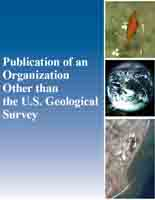LiDAR and paleoseismology solve earthquake mystery in the Pacific Northwest, USA
Links
- More information: Publisher Index Page (via DOI)
- Open Access Version: Publisher Index Page
- Download citation as: RIS | Dublin Core
Abstract
One of the largest historical earthquakes in the U.S. Pacific Northwest occurred on December 15, 1872 near the south end of Lake Chelan. Lack of recognized surface deformation suggested that the earthquake occurred on a blind, perhaps deep, fault. New LiDAR data revealed a NW-side-up scarp along the north side of Spencer Canyon near Entiat, Washington. Landslides triggered during the earthquake impounded small ponds in Spencer Canyon; the larger of the two landslides obliterated a portion of the scarp. Tree-ring counts show that the oldest trees on each landslide are 130 and 128 years old, and lend credence to the idea that the earthquake triggered the landslides. Trenches across the scarp exposed a NW-dipping thrust fault offsetting young soils and Mesozoic bedrock. Radiocarbon and tree ring data shows that the last fault movement was between 1856 and 1873 CE, and was most likely during the 1872 CE earthquake.
Study Area
| Publication type | Article |
|---|---|
| Publication Subtype | Journal Article |
| Title | LiDAR and paleoseismology solve earthquake mystery in the Pacific Northwest, USA |
| Series title | Geophysical Research Letters |
| DOI | 10.1029/2021GL093318 |
| Volume | 48 |
| Issue | 16 |
| Publication Date | August 14, 2021 |
| Year Published | 2021 |
| Language | English |
| Publisher | American Geophysical Union |
| Contributing office(s) | Earthquake Science Center |
| Description | e2021GL093318, 9 p. |
| Country | Canada, United States |
| State | Idaho, Montana, Oregon, Washington |
| Other Geospatial | Pacific Northwest |


